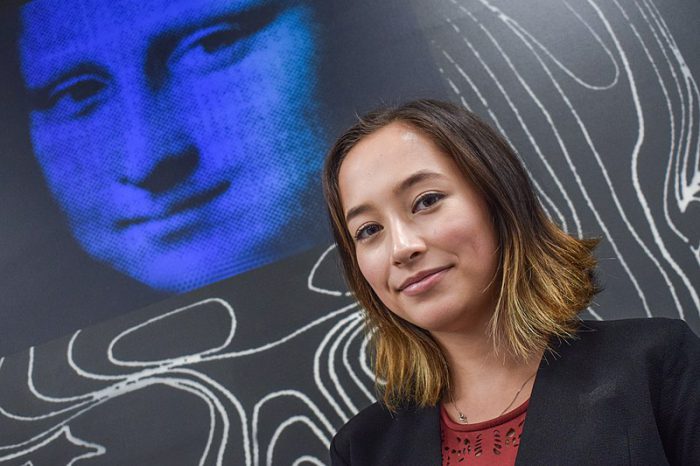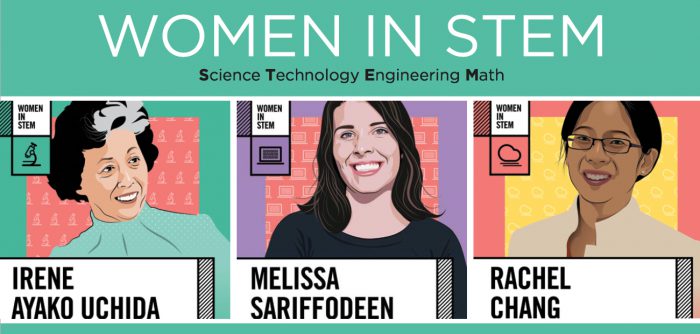Welcome to the final post of our week-long look at inspiring women in honour of International Women's Day.
(Which is today! Happy International Women’s Day, everyone!)
Today, we interview Sandra Corbeil, Director of Strategic Partnerships and Networks for Ingenium and as well as Assistant Curator Emily Gann. The Ingenium museums in Ottawa have put together an incredible traveling exhibit called Iron Willed, which examines the history of women in STEM (science, technology, engineering, and mathematics). It’s a huge topic to cover, and the exhibit sheds light on just how much female innovations and achievement have already affected our world.
And why they’re far from finished, too!
Super STEM!

Canadian inventor Ann Makosinski is one of the women featured in this exhibit. (Wikimedia Commons/Kaloian/Ministerio de Cultura de la Nación Argentina)
OWLconnected: What led to the making of this exhibition?
Sandra and Emily: We wanted to underline that women have always been leaders in science, technology, engineering, and mathematics (STEM) by sharing stories of the important contributions made by women.
We’re not only celebrating the achievements of women in the field in hopes of inspiring a future generation of leaders, but we’re also raising awareness of the barriers, biases, and challenges women have faced in contributing to their fields.
OC: How did you choose the women in this exhibit?
S&E: We believe in the concept “If I can see her, I can be her.” So we took as many aspects of diversity as we could to best represent STEM and the women who are a part of it. We were also hoping to have intriguing stories to engage the audience. For example, Hedy Lamarr’s story is unique; she was an actress, model, and self-proclaimed inventor who laid the groundwork for WiFi technology during the Second World War… all while never really giving up her Hollywood career!
Dr. Strickland accepts the Nobel Prize for Physics on December 10, 2018. (Getty Embed)
OC: After Donna Strickland won her Nobel Prize last year, she told CBC: "Obviously we need to celebrate women physicists, because we're out there.” Can you speak to the importance of role models in getting women involved in STEM?
S&E: Role models matter a great deal. As museums, we share stories all the time. When we do, we are not only sharing the stories of the work and the achievements, but the stories of the people who dared to think differently in order to bring these ideas into reality. They can help to normalize women in STEM for the next generation.
OC: Are there any areas within STEM where women are already getting noticeably more involved?
S&E: Yes. For example, some fields, such as medicine, have a much stronger representation of women compared with engineering. But it’s also important to realize that “being involved” means feeling that you can choose to study and pursue a career — one where you will be equally valued and able to advance without impediment.
Consider the movie Hidden Figures and how women were involved but not necessarily recognized or valued. That’s a great example of how women can be overlooked, no matter how much they bring to their careers.
Groundbreaking chemist and physicist Marie Curie in her lab in 1905. (Getty Embed)
OC: What is your favourite anecdote about one of the subjects/stories told of this exhibit?
S&E: The story of Nobel Prize winner Marie Curie’s wedding dress demonstrates the dedication that these women have for their work. When Marie and her partner Pierre had a wedding ceremony, she wore a laboratory dress! She’s quoted as saying, “I have no dress except the one I wear every day. If you are going to be kind enough to give me one, please let it be practical and dark so that I can put it on afterwards and to go the laboratory.”
OC: Tell us a female-discovered STEM innovation that you just can’t imagine living without.
S&E: Dr. Anna Marion Hilliard helped simplify the Pap test — a critical screening procedure for detecting precancerous cells in the cervix. Her advocacy work in the 1950s increased women’s participation in this lifesaving, cancer-screening process.
 Just some of the women whose stories are a part of Iron Willed. (Ingenium/Iron Willed exhibit)
Just some of the women whose stories are a part of Iron Willed. (Ingenium/Iron Willed exhibit)










this was a really cool text. It talks about The Ingenium Museum on its Women in STEM exhibit. I was fascinated about on the things that the women’s build.
I think this article is right and good and meaning full
i think that this is a brilliant idea, and that woman in stem should be recognized more because woman came up with some of the most popular and useful things.
i was fascinated in how that women are into science and the inventions they built. wow